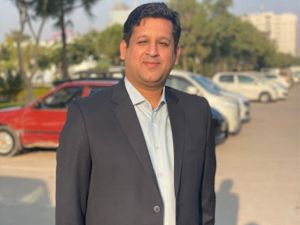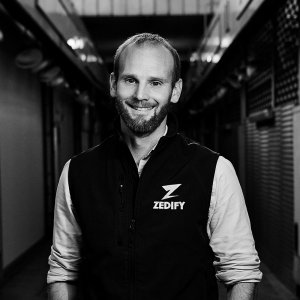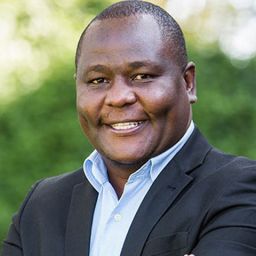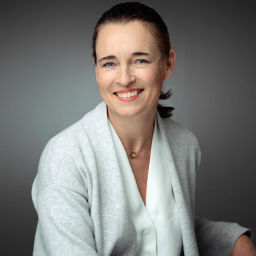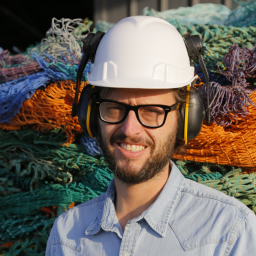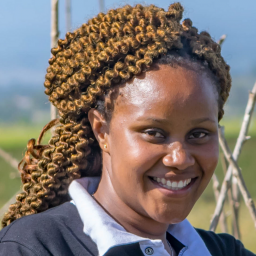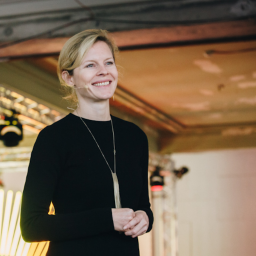Meaningful Business (MB): Can you tell us a bit about the issues you are trying to solve and why you selected them?
Gesa Biermann (GB): European forests are at high risk due to climate change. Many of them consist of monoculture forests, which are highly endangered as a result of droughts, storms, and bark beetles. The solution to this problem is to turn them into climate-resilient, biodiverse, mixed forests. Failure to act could result in projected value losses of up to EUR 500 billion at the European level, with Germany needing to adapt three million hectares of forest to climate change. Despite the urgency, forest adaptation has lacked incentives, with no relevant legislation and insufficient public funding. However, forest owners urgently require financing for adaptation measures. The voluntary carbon market can provide this kind of funding, if made accessible to forest owners in an easy and affordable way.
Carbon markets fascinated me and my Co-Founder from the beginning. They offer a great opportunity to align both economic and environmental goals, channelling investments into much-needed nature-based solutions. Realising that we have huge financing gaps in Germany alone, as well as a high need for climate adaptation in our forests, we knew that this was exactly the problem we wanted to solve.

Gesa Biermann, Co-Founder & CEO, Pina Earth
(MB): How is your work tackling those problems and what impact are you having?
(GB): Pina Earth’s technology enables forest owners to participate in the voluntary carbon market by digitising the manual carbon project certification process, aided by artificial intelligence. Our projects not only sequester additional CO2 but also enhance forest biodiversity and bolster resilience against escalating threats such as heatwaves, storms, and droughts. The forest adaptation measures include planting diverse, climate-resilient tree species, natural rejuvenation of the forest stands, as well as the protection of existing species. Utilising advanced forest growth simulation, we forecast the trajectory of forest development over the next 30 years under changing climate conditions. By comparing the carbon storage potential of emerging mixed forests against monoculture management, we quantify the additional carbon storage potential that our measures enable.
Through our suite of digital tools, companies can seamlessly invest in high-quality carbon credits, locally. An investment into our projects helps companies to communicate their climate contribution in a more tangible and transparent way, addressing the needs of their customers. With over 20 million square metres of forest adaptation projects under management, we’re the market leader in Germany.
(MB): What support do you need in order to scale your business and increase your positive impact?
(GB): To increase our impact, we need to further raise awareness about the state of European forests to secure more funding for our current and future climate projects. This will also accelerate our sourcing process and help landowners to build trust in our solution and service.
To scale carbon markets – and our business accordingly – we need to foster trust by developing robust and scientifically based methodologies and transparent project reporting. By adhering to rigorous standards and ensuring accountability, we aim to bolster trust in carbon markets and consequently scale our business to maximise our positive impact on forests and the environment.
(MB): How do you work with partners and the wider ecosystem to achieve your mission?
(GB): A pivotal aspect of climate action involves raising awareness and educating consumers about the dire consequences and urgency of climate change. To achieve this, we employ a variety of communication formats, including interviews and case studies with our partners, to illustrate how supporting climate projects can make a tangible difference in preserving our planet.
On the methodological side, we collaborate closely with standard organisations to continually refine our methodologies and expand our project portfolio. Through public consultations, we actively seek input from experts and the general public, inviting feedback on our methodologies and presenting our solutions to expert committees. Additionally, we engage in constructive dialogues with political stakeholders to effectively convey our position and advocate for meaningful change.
(MB): What is your ambition for the future of your business?
(GB): Our core purpose is to leverage the power of technology to enable effective climate action. Following this mission, our ambition is to expand these efforts into a wide project portfolio of nature-based solutions to fight climate change. Therefore, our focus not only lies on removing carbon emissions from the atmosphere but also on adapting forests to droughts, storms and beetle infestations that we already experience as a consequence of climate change.
To do this, we need to build a sustainable business. Sustainable not only in terms of the solution that we provide but also in terms of the environment that we build and the culture that we embrace in our company. That’s why we set strong company values and, for example, publish our own sustainability report, which summarises our efforts to live a diverse and inclusive team culture. I strongly believe that building a strong team is the foundation for future success.
(MB): How do you measure success?
(GB): We measure the success of our solution based on three key KPIs: the overall project area under management, the accumulated carbon sequestration over the next 30 years, and the amount of money channelled into forest adaptation. Until now, we have more than 2,000 hectares of forest under development. More than 100,000 tons of additional carbon sequestration potential over the next 30 years is already certified by independent third-party auditors. Besides the overall carbon sequestration through our projects, turning monocultures into mixed forests by planting diverse tree species also increases overall biodiversity in our forests.
And last but not least, as I mentioned before, success is also measured by building a sustainable team culture. Therefore, we also measure employee satisfaction and team happiness KPIs on a regular basis. I’m more than proud of the team culture we’ve built so far, attracting a world-class, cross-functional team that drives our mission forward every day.
————-
Quickfire questions:
(MB): Tell us a mistake you’ve learned from
(GB): We’ve learned to avoid the “build trap,” where you focus too much on building features without validating their impact. It’s easy to fall into this trap if you’re excited about technology. That’s why we prioritise customer feedback and iterate quickly, ensuring that every development aligns with our mission at Pina Earth.
(MB): How do you spend your time away from work?
(GB): Away from work, I love exploring nature, whether it’s hiking in the Bavarian Alps or simply taking a stroll in the nearby English Garden in Munich (We’re lucky to have one of Europe’s largest parks!). It’s my way of reconnecting with the environment we’re striving to protect.
(MB): What’s the best piece of advice you’ve ever received?
(GB): The best advice I’ve received is to “focus on progress, not perfection.” It’s a reminder that in the pursuit of our goals, it’s more important to keep moving forward, rather than getting bogged down by the quest for lawlessness. And most importantly, enjoy the journey!
(MB): What is something you wish you were better at?
(GB): It’s tough to maintain a healthy work-life balance as a founder. Sometimes, my passion for our mission at Pina Earth leads me to prioritise work over personal time. Striking a better equilibrium between the two is an ongoing goal for me.
(MB): What is the one book everyone should read?
(GB): One nonfiction book I highly recommend is Make Time by Jake Knapp. It’s filled with practical strategies for reclaiming your focus and energy in today’s fast-paced world, which is invaluable for anyone striving to make a difference.
________


